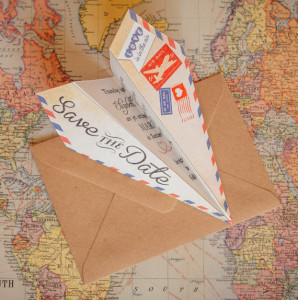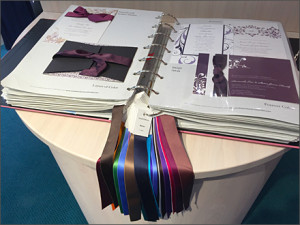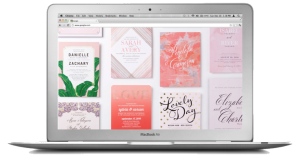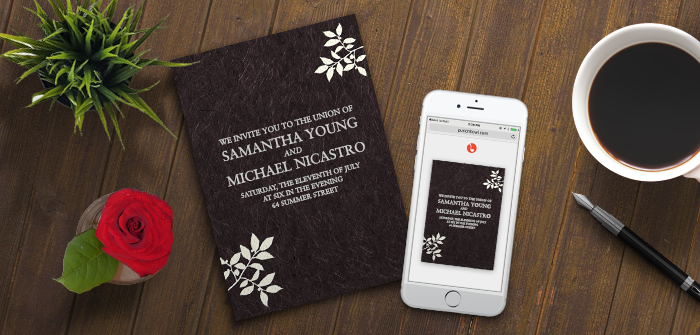Note: This is Part 3 of a three-part series about the Past, Present & Future of the Wedding Industry. These posts were written in 2016 and represent a snapshot of the industry and my thoughts at that time. While some of the industry’s statistics have changed and its businesses have evolved, many of these ideas still hold true today. Sign up to receive future blog posts by email.
Over the past month, I’ve written a series of posts about how digital innovation has impacted the Wedding industry. I think this industry is a great example of just how much transformation has taken place in the last 15 years. In Part 1, I shared some of my thoughts about how Wedding Inspiration, Venues, and Photography have changed as a result of new technology. In Part 2, I covered Wedding Registries, Wedding Attire, and Wedding Websites.
Thanks to everyone who has read the articles and offered such interesting feedback. Here’s a great example from a Wedding DJ who has personally seen the impact of technology on his business:
“Your article caught my attention. I have been a wedding DJ/Emcee since 1987. Nothing prepared me for the digital disruption of the mid 2000’s. The internet, Napster, and iTunes broke down barriers to entry that saturated the market with participants and quickly lowered compensation rates and consumer expectations to levels that were quite simply…unsustainable. Whats more, marketing costs spiked as an endless array of internet wedding portals added yet another expense in reaching the prospective bride and groom. Many fellow entertainers, photographers and videographers I knew and worked with (some of which had low 6 figure revenues in the early 2000’s) exited the business by 2012 as a result.”
I can imagine that story repeated countless times by people who have been impacted by technological change in the wedding business.
In this final post, I share my thoughts on two topics that I know a lot about as the CEO of Punchbowl. Below, I cover how technology has impacted the two primary communication touch points: Wedding Save-the-Dates and Wedding Invitations. Let’s jump in.
WEDDING SAVE-THE-DATES
Past: When I got engaged 15 years ago, a number of my friends were getting married too. From the period of 2000 to 2005 we received save-the-dates in many different paper stocks, colors, and styles — all printed impeccably with different fonts and calligraphy. This was the norm, and it was common for couples to spend hours at a stationery store picking out a set of matching save-the-dates and wedding invitations.
My fiancée and I wanted to do something different and creative for our save-the-dates. We looked online, but there weren’t many options beyond standard paper cards. We decided to create our own magnets that had all of the information about our wedding weekend including a link to our wedding website. Our goal was to set the tone and excitement for our wedding weekend (we planned three days of events) and to make sure that people booked a hotel early since we were getting married on a holiday weekend. It took several weekends to create our custom save-the-date magnets, with a bunch of trial and error. We also had the challenge of how to best mail them. We ended up packaging them in a simple white envelope, which was a bit of a bummer. Our great magnet creation didn’t look as good when shipped in a simple white envelope!
 Present: Today, there are many different options for save-the-dates and plenty of online resources to
Present: Today, there are many different options for save-the-dates and plenty of online resources to
help couples create something special and unique. From magnets, postcards, digital cards, and even paper airplanes, there are numerous websites that help couples send out the perfect save-the-date that matches their personal style and budget. All of these different options, of course, come with different prices: printed postcards range from $0.20 to $0.55 each, magnets from $0.30 to $1.60, folded cards with envelopes from $0.30 to $4, and novelty cards (admission tickets and scratch cards) average $1.50 to $2.50 each. Based on these numbers, save-the-dates can cost you anywhere from $20 to $400 for a wedding with 100 guests.
In the digital world, online save-the-dates are more commonplace than ever. Punchbowl (where I’m the CEO) has beautiful Wedding Save-the-Dates that are fully customizable. Couples can easily add a link to their wedding website as well as important information about hotels. Most of the options on Punchbowl are free to use (ad supported) while some of our best designs are only available to members. Brides find our site in a number of ways, often by searching keywords such as “online save the dates” or “electronic save the dates.” While wedding save-the-dates are a small portion of our overall traffic, it’s steady and lucrative.
Future: I believe that the future of the Wedding Save-the-Date is digital. What we’re seeing in 2016 is some brides fully adopting digital, while others still favor paper, especially for their older relatives. 15 years from now, I believe that most save-the-dates will be delivered digitally. In fact, companies that are in the business of selling printed save-the-dates should be concerned about their future business. Here’s why:
• Innovation. Companies like Punchbowl are working on next-generation user experiences that will take the digital save-the-dates to the next level. As digital save-the-dates offer features and functionality that are simply not available on paper, I believe most couples will choose to send online.
• Seamless Design. As digital services become easier to use, brides will be able to create a complete experience where their engagement announcement, save-the-date, and wedding website all share the same design. These capabilities will enable a bride to put their personal touch on every guest communication touchpoint. I believe a digital save-the-Date will be part of this seamless design aesthetic.
• Mobile Enhancements. Wedding guests want to be able to easily add the wedding to their personal calendar, quickly book the wedding hotel, and be alerted about the best time to book a flight. These are all things that digital can provide seamlessly as part of a save-the-date, especially on mobile. These benefits will far outweigh the tradition of sending save-the-dates in the mail.
• Video. I believe video will play a prominent communications role as a way for the happy couple to connect with guests. Imagine if the couple had the ability to easily record a personal video for their most important guests to let them know the initial details about their wedding. In turn, guests could respond with a video to share their excitement and good wishes. This kind of enhancement to save-the-dates, only available with digital, will delight both engaged couples and their wedding guests. It’s another reason that the market for Wedding save-the-dates is going digital.
It’s pretty clear to me that most Wedding Save-the Dates will be digital in the future — but what about Wedding Invitations? Let’s now take a look at the past, present, and future of this market.
WEDDING INVITATIONS
Past: The wedding invitation business has been all about paper for hundreds of years, traced back to the invention of metal-plate engraving in 1642. My future wife and I were no different than so many other couples before us. Paper wedding invitations were the default choice. Interestingly, we picked out our  wedding invitations at the same boutique where she bought her dress. At the time, this was common. The wedding boutique provided full service for the bride and emphasized convenience over price. The ordering process was lengthy: we needed to allow enough time to print the invitations, deliver them to our home, and then assemble, stamp, and address them all.
wedding invitations at the same boutique where she bought her dress. At the time, this was common. The wedding boutique provided full service for the bride and emphasized convenience over price. The ordering process was lengthy: we needed to allow enough time to print the invitations, deliver them to our home, and then assemble, stamp, and address them all.
Wedding invitations were just as expensive then as they are today — we spent hundreds of dollars on a simple wedding invite with an insert card for meal choice. We also ordered 20-30 extra invitations; some in case we made mistakes, and a few as keepsakes. Just a couple of years ago, I finally threw out the box of extra invitations and insert cards. We never used them — what a waste. Of course, we had to buy postage for the invitations too. If my memory serves me, we spent about $150 on stamps for the invitations and pre-stamped envelopes for the reply card.
When I got married, we didn’t even discuss the option of sending invitations digitally — paper invitations were the expected behavior.
Present: I’ve been invited to six weddings in the past three years. Of those, all but one sent a paper invitation. The one digital invitation I received was from someone who decided to buck the trend. I asked her why she decided to send digital wedding invites and she pointed me to a blog called A Practical Wedding that inspired her. The blog’s philosophy is “focused on creating a culture that supports laid-back, feminist weddings. All that stuff wedding media tells you that you have to have? We think you don’t have to have it (unless you actually want it). And we don’t believe that all those things people tell you are traditions actually are traditional.” My friend explained that the blog and associated book reminded her that: “Everything else is BS, so you shouldn’t feel like you HAVE to do anything” and that she felt “much more empowered to make choices (like sending online invites) after reading that.”
Even though one of my friends went digital, the majority of wedding invitations are still paper. According to The Knot, the average cost of paper wedding invitation is $439 and that doesn’t include $2-$5 per envelope that some brides pay for calligraphy. The total market for paper wedding invitations is roughly at $2.5-3B. Indeed, the paper wedding invitation business is still booming, regardless of the cost.
One key reason that couples choose paper invitations is because of the number of older people on the guest list. While many Grandmas are active on email and have a smartphone, there’s far more that aren’t. And that poses a problem for those who want to switch to digital but have no other way to reach Aunt Betty. 15 years from now, that problem will be far less than it is today (that segment of the market is dying off… literally!).
 Although paper wedding invitations are almost as popular as 15 years ago, technology has changed how a bride buys. While some couples still visit stationery stores or bridal boutiques to pick their invitations, a large percentage of the market has shifted online. There are many, many (many!) sites that offer couples the ability to order paper invitations online—Wedding Paper Divas, Vistaprint, Minted, Einvite, Paperless Post, Invitations by Dawn, Paper Source, LovePop, and even Costco to name a few. These sites offer quality, customizable printed invitations at more affordable prices than stationery stores, and the convenience to pick and order invitations from the comfort of your home. There are so many places to order wedding invitations online that it’s hard to distinguish these sites from one another (this is one of many reasons that Punchbowl has chosen not to enter the printed invitation market).
Although paper wedding invitations are almost as popular as 15 years ago, technology has changed how a bride buys. While some couples still visit stationery stores or bridal boutiques to pick their invitations, a large percentage of the market has shifted online. There are many, many (many!) sites that offer couples the ability to order paper invitations online—Wedding Paper Divas, Vistaprint, Minted, Einvite, Paperless Post, Invitations by Dawn, Paper Source, LovePop, and even Costco to name a few. These sites offer quality, customizable printed invitations at more affordable prices than stationery stores, and the convenience to pick and order invitations from the comfort of your home. There are so many places to order wedding invitations online that it’s hard to distinguish these sites from one another (this is one of many reasons that Punchbowl has chosen not to enter the printed invitation market).
Future: If you asked me ten years ago, I would have unequivocally told you that I believed the wedding invitations market would be dominated by paper for decades to come. My tune has changed in the past few years, as I’ve seen the rapid rise of Millennials and their adoption of new technology. In a world of Snapchat, Instagram, and on-demand services like Uber, I no longer believe that the paper wedding invitation is here to stay. I now believe that the transition from paper wedding invitations to digital WILL happen — and it might be sooner than most of us realize. Here’s why:
• Millennials have arrived. A recent study by the U.S. Census Bureau revealed that there are more Millennials than Baby Boomers. Millennials are defined as youth who were born between 1982 and 2000. This generation has grown up using the Internet and are typically the driving force behind digital trends. They are far more likely to adopt digital services, and have less reverence to tradition. Today, the average age of brides is 29 and grooms is 31 – this means that more and more Millennials will be planning weddings over the next 10 to 15 years. I believe this will have big implications for the paper wedding invitation market.
• Convenience. Millennials value information and speed. Digital invitations provide instant feedback from the moment you send the invitations to when you receive RSVPs. In today’s real-time information society, couples want visibility into who has received and opened their invite. With digital, there is no need to wait weeks for reply envelopes to arrive in your mailbox. These benefits far outweigh tradition for the next generation of brides.
• Significant savings. The Millennial generation values affordability. When compared to paper wedding invitations, digital invitations cost a fraction of the price. For budget conscious Millennials, paper wedding invites is one easy place to save money. And weddings aren’t getting any cheaper, with the average price now more than $30,000.
• Demise of the Postal Service. It’s been well-documented that the Post Office is in dire straits. In 2015, they reported a whopping $5B loss. Most people that I know under 25 years old never go to the post office unless they need to mail a package. And now there are great apps like Shyp that not only send a courier to pick up your package, but they also provide shipping materials. For Millennials and tech-savvy adults, it’s not hard to imagine a world without the Post Office. For many people (like me), it’s not a question of when the Post Office will disappear, it’s when. Without the Post Office, will it even make sense to send paper invites to people’s houses?
• Environmentally-friendly. For some couples, the environment plays a big role in purchase decisions. Digital offers an environmentally-friendly alternative to paper invitations. This may seem like a very small way to impact the environment, but consider that there were over 2.1 million marriages in the US last year. With an average guest size of 100 people per wedding, this is a staggering amount of paper that is manufactured for a one-time use and then tossed in the trash. Millennials will consider the environment, and more and more of them will choose digital.
FINAL THOUGHTS: In this three-part series, I’ve taken a deep-dive into how one industry has been impacted by digital innovation. We’ve seen just how much every segment of the wedding industry has been transformed over the past 15 years. But what’s even more amazing to me is how almost EVERY industry has been transformed. You see, I could have written a similar analysis for almost any industry — from transportation to music, and from healthcare to retail. We are living in a revolutionary time, where technology has changed markets that have been stagnant for decades. It’s amazing to be a part of it all.
Thank you very much for reading this post, and for all of your great comments throughout this three-part series. Have thoughts you would like to share? Don’t hesitate to get in touch.


